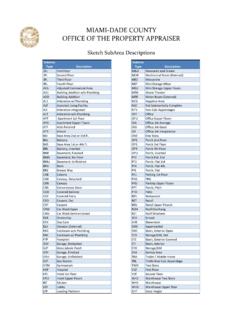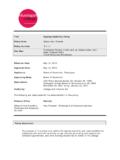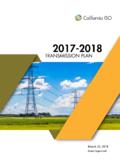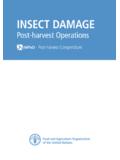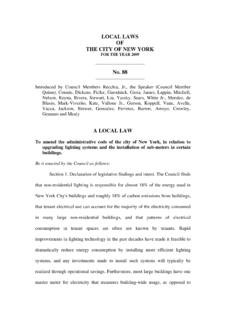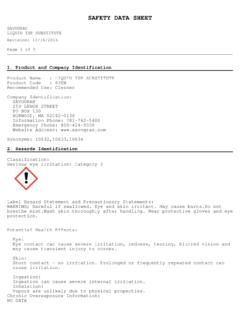Transcription of Recruiting, Retaining, and Retraining Secondary School ...
1 W O R L D B A N K W O R K I N G P A P E R N O . 9 9. A F R I C A H U M A N D E V E L O P M E N T S E R I E S. recruiting , retaining , and Retraining Secondary School Teachers and Principals in Sub- Saharan Africa THE WORLD BANK. W O R L D B A N K W O R K I N G P A P E R N O . 9 9. recruiting , retaining , and Retraining Secondary School Teachers and Principals in Sub-Saharan Africa Aidan Mulkeen David W. Chapman Joan G. DeJaeghere Elizabeth Leu Secondary Education In Africa (SEIA). Africa Region Human Development Department THE WORLD BANK. Washington, Copyright 2007. The International Bank for Reconstruction and Development / The World Bank 1818 H Street, Washington, 20433, All rights reserved Manufactured in the United States of America First Printing: March 2007. printed on recycled paper 1 2 3 4 5 10 09 08 07. World Bank Working Papers are published to communicate the results of the Bank's work to the devel- opment community with the least possible delay.
2 The manuscript of this paper therefore has not been prepared in accordance with the procedures appropriate to formally-edited texts. Some sources cited in this paper may be informal documents that are not readily available. The ndings, interpretations, and conclusions expressed herein are those of the author(s) and do not necessarily re ect the views of the International Bank for Reconstruction and Development/The World Bank and its af liated organizations, or those of the Executive Directors of The World Bank or the gov- ernments they represent. The World Bank does not guarantee the accuracy of the data included in this work. The boundaries, colors, denominations, and other information shown on any map in this work do not imply any judgment on the part of The World Bank of the legal status of any territory or the endorsement or acceptance of such boundaries.
3 The material in this publication is copyrighted. Copying and/or transmitting portions or all of this work without permission may be a violation of applicable law. The International Bank for Reconstruction and Development/The World Bank encourages dissemination of its work and will normally grant per- mission promptly to reproduce portions of the work. For permission to photocopy or reprint any part of this work, please send a request with complete information to the Copyright Clearance Center, Inc., 222 Rosewood Drive, Danvers, MA 01923, USA, Tel: 978-750-8400, Fax: 978-750-4470, All other queries on rights and licenses, including subsidiary rights, should be addressed to the Of ce of the Publisher, The World Bank, 1818 H Street NW, Washington, DC 20433, USA, Fax: 202-522-2422, email: ISBN-10: 0-8213-7066-9 ISBN-13: 978-0-8213-7066-7. eISBN: 978-0-8213-7067-4.
4 ISSN: 1726-5878 DOI: Cover photo by Jacob Bregman. Aidan Mulkeen is at the National University of Ireland. David W. Chapman and Joan G. DeJaeghere are at the University of Minnesota. Elizabeth Leu is at the Academy for Educational Development. Library of Congress Cataloging-in-Publication Data has been requested. Contents Foreword v Acknowledgments vii Executive Summary ix 1. Introduction 1. 2. Review of the Literature on Secondary Teacher and Principal Recruitment, Retention, and Retraining 3. Introduction to the Literature Review 3. Teacher Supply and Demand 4. Teacher Recruitment 9. Teacher Retention and Attrition 12. Teacher Deployment 17. Teacher Remuneration 22. Teacher Education 26. Teaching as a Career: Morale, Development, and Support 30. Governance 31. Gender 35. School Leaders: Principals and Head Teachers 37. Summary of Findings from the Literature Review 39.
5 3. Field Study of Secondary Teachers, Principals, and Decisionmakers 43. Introduction to the Field Study 43. Recruitment and Deployment of Teachers 45. Conditions of Service 47. Teacher Retention 50. Teacher Professional Development 52. Recruitment and Training of Principals 57. Special Issues 58. Summary of Findings from the Field Study 61. 4. Recommendations 63. Recommendations for Strengthening the Quality of Teachers 63. Recommendations for Strengthening the Quality of Principals (Head Teachers) 66. Recommendations for Action on Critical Crosscutting Issues 66. Recommendations for Further Research on Secondary Teachers and Principals 68. References 69. iii iv Contents LIST OF TABLES. Sub-Saharan Africa: School -age Population Data 6. Transition from Primary to Secondary Education 7. Duration in Years of Primary and Secondary General Education for Selected Sub-Saharan African Countries 8.
6 Secondary Teacher Projections in 2005, Selected Countries 10. Quali cations of Secondary Teachers in Uganda 11. Teacher Mortality Rates by Marital Status and Type of School in Botswana, 1999 15. Teacher Absenteeism Rates 16. Reasons for Teacher Absences 16. Active Armed Con icts in Africa, 2001 18. Average Secondary Teacher Salary and Bene ts 23. Average Secondary Teacher Remuneration 24. Madagascar: Time Use of Teachers in Secondary Schools, 1998 25. Females as a Percentage of Secondary School Teachers 36. Percentages of Male and Female Secondary Teachers Who Are Trained, 1998 37. Sample of the Surveyed Teachers, Principals, and Policymakers 44. Teacher Salary Range 49. Fees Paid in Surveyed Schools 58. LIST OF FIGURES. Key Issues in Teacher Supply and Demand 5. Illustration of Common Forms of Corruption at District, School , and Classroom Levels 33. Tackling Corruption and Malpractice: An Extract from a Ugandan Newspaper Describing the Jailing of an Education Of cial 34.
7 Number of Male and Female Teachers in Surveyed Schools 45. Number of Teachers in Surveyed Schools from Outside the Area and from the Area Near the Schools 45. Number of Class Periods Taught per Week 47. Teacher and Principal Perceptions of Teacher In uence in the School 50. Teacher and Principal Perceptions of the Value of Preservice and Inservice Preparation 53. Teacher and Principal Perceptions of Frequency of Student-centered Teaching Methods Employed in the Classroom 55. Foreword M any African countries are undertaking important economic reforms, improving macroeconomic management, liberalizing markets and trade, and widening the space for private sector activity. Where these reforms have been sustained they have raised growth and incomes and reduced poverty. However, Africa still faces serious development challenges. More than 314 million Africans live on less than $1 a day nearly twice as many as in 1981.
8 The continent has 34 of the world's 48 poorest countries. The HIV/AIDS. pandemic costs Africa 1 percentage point of per capita growth a year, while malaria kills about 2,800 Africans a day. UN and World Bank progress reports on achieving the MDGs attest to a renewed com- mitment in Africa to defeat poverty and disease. The Education for All-Fast Track Initia- tive (EFA-FTI) involves more than 30 bilateral and international agencies and has gradually made important strides. In the coming years, the key challenges are to continue the efforts towards achieving universal primary education, to expand Secondary School access in response to demands from growing African economies, and to improve quality, relevance and equity of learning across the board. Secondary education and training (SEIA) will be one of the key factors for increased economic growth and social development.
9 Recent developments in Asia and Latin Amer- ica have shown these trends convincingly. SEIA graduates enter labor markets that increas- ingly demand modern knowledge and skills, readiness to take initiatives, and ability to solve problems and to innovate products and processes. SEIA is also indispensable for young peo- ple to become productive citizens and to lead healthy lives. Our Human Development strategy is anchored in the Africa Action Plan. Through the AAP we work in partnership with other development partners to assist African countries. The SEIA study initiative of our Africa Human Development Department (AFTHD) is led by Jacob Bregman (Lead Education Specialist). The study aims to assist countries in devel- oping sustainable strategies for expansion and quality improvement in SEIA. SEIA's eight thematic studies have been conducted with an emphasis on stakeholder participation.
10 The draft reports have been discussed at the two regional SEIA conferences (Kampala 2003 and Dakar 2004). A SEIA donor workshop was held in 2005 in Amsterdam. All SEIA products are available on the website: This thematic study is about recruiting , retaining , and Retraining Secondary School teachers and principals in Sub-Saharan Africa. The study is based on country studies in Ethiopia, Ghana, Guinea, Madagascar, Tanzania, and Uganda and an extensive literature review. In many parts of Africa, the demand for Secondary teachers substantially exceeds the supply due to factors such as Secondary teacher attrition, bottlenecks in the teacher preparation system, and perceived unattractive conditions of service. Few countries have strong policies, strategies, and programs for recruiting able Secondary leavers to Secondary teaching. Many Secondary School Principals are ill-prepared to meet the demands posed by the changing nature of their jobs.










